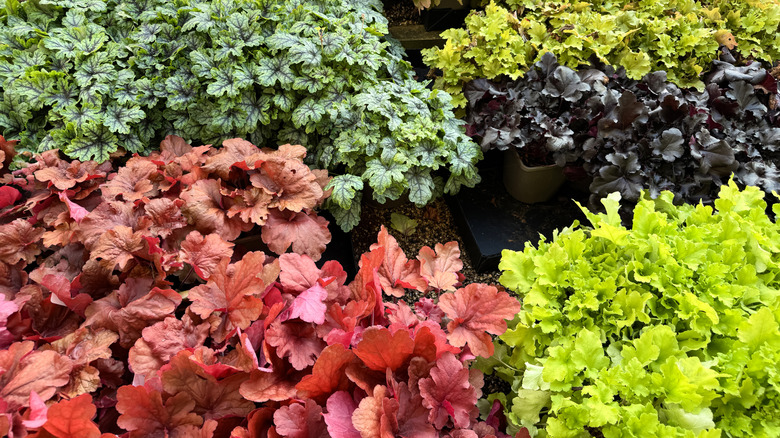
Nikola Stojadinovic/Getty Images
Temperatures are waning and, along with it, so is the majority of your yard and garden activity. For gardeners in the know, however, November offers a late window of opportunity for ensuring the beauty of your upcoming spring garden. But what can you still plant in November? How about an eye-catching perennial favorite, coral bells (Heuchera spp.). This hardy plant is celebrated for its gorgeous and richly colored foliage and delicate flower spikes; plus, it’s a powerhouse for offering colorful year-round blooms in your yard. In fact, there are numerous striking varieties of coral bells. With leaves that range from lime green and deep burgundy to speckled silver and almost black, coral bells provide gorgeous texture and color, creating a beautiful foundation for your garden bends and borders.
Now, the secret to a lush spring bloom of coral bells lies in late fall planting. While most plants prefer a spring start, planting in November (but still before the ground freezes) allows coral bells to focus the initial energy entirely on root establishment. The cooler soil temperatures and more consistent moisture create a nice, low-stress environment where the roots can quietly spread and anchor themselves without having to focus simultaneously on top growth. With this head start, your coral bells become robust and well established so they’re ready to pop up with their charming, bell-shaped flower spires early in spring.
How to successfully plant coral bells in November

Mtreasure/Getty Images
Ensuring you get the most success with coral bells is super straightforward, provided you meet their basic needs. These adaptable perennials are hardy in USDA Hardiness Zones 4 to 9. Coral bells generally prefer partial shade, as the hot afternoon sun can scorch the leaves of some varieties; however, varieties with darker or deep purple foliage can handle direct sun better. The biggest success factor for these plants is soil drainage. They require rich, moist, but exceptionally well-draining soil, as standing water (especially over winter) will lead to crown and root rot. If you have heavy clay soil, amend it with compost or plant your coral bells in a raised bed.
To plant the coral bells, dig a hole as deep as the root ball and twice as wide. Gently loosen the roots before placing the plant so the top of the root crown sits slightly above the soil level. Once planted, water them deeply and consistently until the ground freezes, then keep an eye on it to make sure it stays moist but not soggy. Once established, coral bells are fairly drought tolerant but appreciate about an inch of water per week during the growing season. Follow these easy steps and look out for diseases and pests that affect coral bells, and the newly planted heucheras will sail through winter and emerge as a vibrant star of your spring landscape.


Comments are closed.